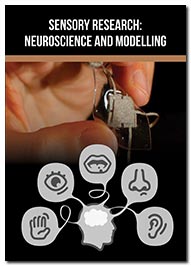About The Journal Open Access

Sensory Research: Neuroscience and Modelling journal is a peer-reviewed, scientific journal covering developments in all aspects of Sensory Systems, including its functions, disorders, diagnosis, therapy, and Rehabilitation.
The journal features original research articles, review articles, short reports, opinion, editorials, clinical cases, perspective and commentary on neural pathways, brain, sensory perception, vision, auditory, somatic sensation, gustatory, olfaction, vestibular, Senses and receptors, stimulus, reflex arc, and nervous system.
Aim and Scope
Sensory Research: Neuroscience and Modelling aims to publishes scientific articles related to sensory and extrasensory perceptions in both living (i.e., animal and human) and artificial (Robots, Softwares) systems. The journal emphasizes integration of ideas, theories, models and techniques from multiple platforms, in analyzing the structure and functional dynamics of sensory systems.
The journal aims to provide a platform for all researchers to promote, share, and gain knowledge of innovative approaches in studying the design of sensory systems and interpreting sensory patterns. All manuscripts submitted to the journal will undergo rigorous peer-review process before publishing. For publishing an article after submission it takes 45 days to complete whole process of quality assessing.
Individuals interested in becoming members of the Editorial/Review Board should contact by email at neuroscience@psychiatryjournals.org
editorialservice@alliedacademies.org
Just Published Articles
Mini Review May 03, 2018
P.1-2
Sens Syst J: 1(1): 1-2
Short-term adaptation in the auditory periphery: What is it and what is it good for?
Robert L Smith
Commentary November 09, 2017
P.1-1
Sens Syst J: 1(1): 1-1
Comparison in efficacy of dopaminergic therapy between a group of ParkinsonâÂÂs disease patients and a group of patients with vascular parkinsonism.
Zarola F
Research Article October 05, 2017
P.1-9
Sens Syst J: 1(1): 1-9
Time course of face perception measured by differential Pavlovian conditioning
Yusuke Nakashima, Yoichi Sugita